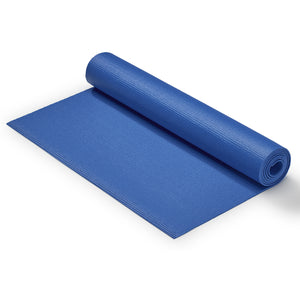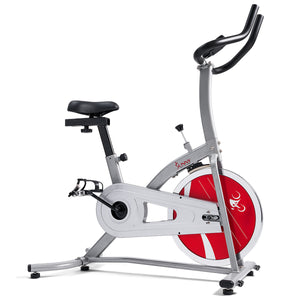There has been a subtle but noticeable shift in the world of fitness. As you might have noticed, the COVID-19 pandemic provided home exercise with a spotlight, and people everywhere began to swap their gym memberships for living room workouts. Low impact exercise such as yoga, Pilates, and Barre are nothing new; they have been around for decades, even centuries, but recently have taken center stage in the fitness industry. This has been one of the few silver-linings of the pandemic; fitness and working out has quickly become more accessible to all, and the collective mindset of the fitness industry has pivoted to prioritizing workout quality over quantity.
With more emphasis than ever on stretching, recovery, mobility, and “pre-hab,” the draw to this type of exercise has only continued to grow. While workouts like HIIT and heavy lifting certainly have their place in the fitness world, low impact exercise routines can provide extensive fitness benefits while also being gentle with your body.
What if Low Impact Training Is Too Easy for Me?
Before we dive into all the amazing reasons you should add low impact exercise into your routine, let’s start with a few definitions. It is a common misconception that low impact means the workout is “easy” or “low intensity.” While low impact and low intensity exercise seem like they might be the same thing, and there is often overlap, they can also encompass vastly different types of exercise.
Low Impact
This refers to any kind of exercise that has little to no impact on your body, specifically your joints, ligaments, and tendons.(1) Examples of low impact exercise are yoga, cycling, swimming, or resistance band exercises. However, it is important to recognize that low impact exercise isn’t necessarily low intensity. You can do all these types of exercise at quite a high intensity, but impact remains minimal.
Low Intensity
Intensity level refers to how difficult the exercise workload is for you. Do you feel out of breath with an elevated heart rate? Do you feel fatigued? Exercise that leaves you drenched in sweat with your lungs burning will probably fall into the “high intensity” category. If you feel as if the exercise you are performing is light and gentle movement with little to no change in heart rate or breathing rate, it typically falls into the “low intensity” category.
Why Should You Add Low Impact Workouts to Your Exercise Routine?
There is a time and place for both low and high impact exercise in any fitness routine. However, it is important to recognize what your body needs and when to focus on each type of exercise. The key is to be mindful of what you are experiencing and set yourself up for success. Below are seven reasons why you might want to try adding low impact or low intensity exercise into your workout split:
1. Protects joints
Not only is low impact exercise inherently good for your joints by keeping force to a minimum, but it can also help support them by strengthening the muscles, tendons, and ligaments surrounding the joint. This promotes stability and strength, making your movements more effective and safer. People who are recovering from injuries, are new to exercise, or have other conditions that may cause exercise limitations can greatly benefit from this type of exercise, but the advantages don’t stop there. Even if you are an avid exerciser that does HIIT training regularly, you can improve your long-term joint health and training longevity by integrating low impact training into your regular routine.(2)
2. Decreases injury risk
In the same way that low impact exercise is easy on your joints, it is also gentle on your muscles while still providing a stimulus for increasing muscular strength and growth. Many high intensity exercises that involve jumping place your muscles under an immense amount of force in a short period of time. If not properly prepared, or if you implement these exercises too often in your training program, this can be a quick road to injury. Adding in exercises with minimal impact will protect you from having to sit out on the sidelines in pain.
3. Less recovery time needed after your workout
If you love your workouts but are left feeling absolutely exhausted afterwards, it may be time for some low impact exercise. This allows you to continue building strength and cardiovascular fitness without feeling like you need a 3-hour nap afterwards.
4. Promotes better technique and alignment
High impact exercise often includes many complex, compound movements that require significant amounts of coaching and practice. Taking time to slow things down, and really focusing on your body and how it is moving, can be invaluable information on how to apply these movements to more complex techniques. It is also great proprioceptive feedback, meaning it teaches you to better understand your body placement and how it moves through space and different positions.(3)
5. Improves mobility
Many types of low impact workouts focus on working through your full range of motion (think yoga or Pilates). This is significant, as having adequate mobility will allow you to move through the world more comfortably and efficiently.
6. Ideal for all levels
The beauty of low impact exercise is that you can make it high OR low intensity. Depending on your fitness level, you can easily adjust most low impact workouts to meet your needs—whatever they may be.
7. Your downstairs neighbors will thank you!
If you have ever lived in a downstairs apartment, you know how annoying it can be to hear loud stomping and crashing coming from your ceiling. Low impact workouts can still get your heart rate up, while keeping the peace with your neighbors downstairs.
Low Impact Exercise for High Impact Connection
Because low impact training can be modified to target any fitness level, this is the perfect type of workout to do with a partner. If you and your significant other are at different points on your fitness journey, you can still join in together on some low impact training to challenge each other at any level.
1. Yoga
Relax and unwind together while building strength and mobility all in the same workout! One of the best things about yoga, and why it makes for an excellent partner workout, is that you can modify any pose to fit your own practice and fitness level. Yoga is the perfect way to work at your own pace and intensity level, while also spending quality time with your partner.
2. Walking
Walking is a great way to hit your cardio goals for the day without adding unnecessary impact to your joints. This is ideal for connecting with your significant other while also benefitting your cardiovascular system.
3. Partner stretching
Enlist the help of your partner to guide you deeper into that post-workout or post-walk stretch! By having a partner help you with stretches, this allows your muscles to fully relax for a greater range of motion through each joint. This can be a great supplement to your regular stretch routine, as some research shows that passive stretching can lead to improved flexibility when compared to an active stretching routine.(4)
Tying Low Impact Workouts into Your Workout Split
If you are a HIIT training fanatic and would never dream of cutting your plyometric exercises from your exercise routine, don’t worry. There is plenty of room for both high impact and low impact training in your workout plan. Try swapping out one high impact workout per week for a low impact one, to give your joints a reprieve while still working towards your strength or cardiovascular fitness goals. You can also try incorporating an active recovery day to your routine, where you enjoy some light walking and stretching. This keeps your body moving while also allowing it to recover from any strenuous workouts you completed earlier in the week.
The bottom line is to be mindful of how you are feeling and give your body what it needs! You can still improve your fitness and make progress on your goals with low impact or low intensity training, while also being gentle on your body. Keep your joints healthy and continue training for years to come by adding low impact training to your workout plan!
1. High-Impact vs. Low-Intensity Workouts, American Sports and Fitness Association, 2022. High-Impact vs. Low-Impact Exercises – ASFA (americansportandfitness.com) Accessed 24 January 2023.
2. Effects of two 4-week proprioceptive neuromuscular facilitation programs on muscle endurance, flexibility, and functional performance in women with chronic low back pain, Physical Therapy & Rehabilitation Journal, 2006. Effects of Two 4-Week Proprioceptive Neuromuscular Facilitation Programs on Muscle Endurance, Flexibility, and Functional Performance in Women With Chronic Low Back Pain | Physical Therapy | Oxford Academic (oup.com) Accessed 30 January 2023.
3. Proprioception, Psychology of Learning and Motivation, 2013. Proprioception - an overview | ScienceDirect Topics Accessed 3 February 2023.
4. Immediate effect of passive and active stretching on hamstrings flexibility: a single-blinded randomized control trial, Journal of Physical Therapy Science, 2015. Immediate effect of passive and active stretching on hamstrings flexibility: a single-blinded randomized control trial - PMC (nih.gov) Accessed 8 February 2023.



























Add Your Name & Email
Please enter your name and email to continue.We won’t display your email publicly.